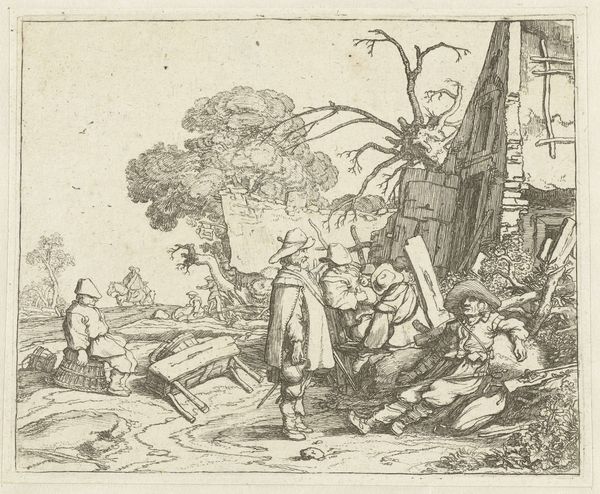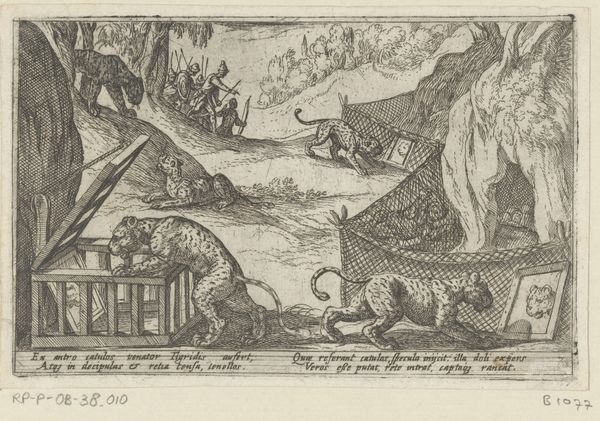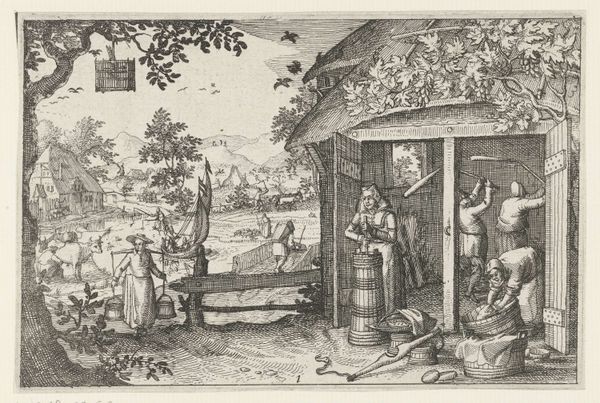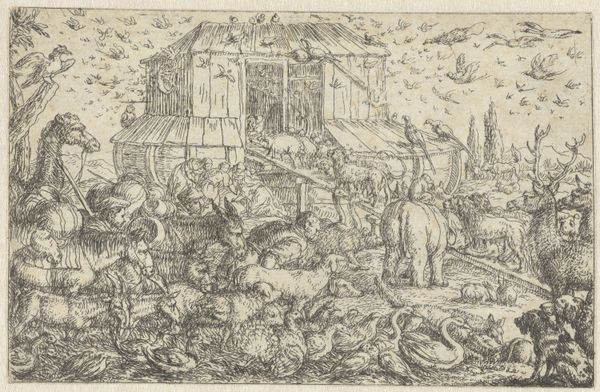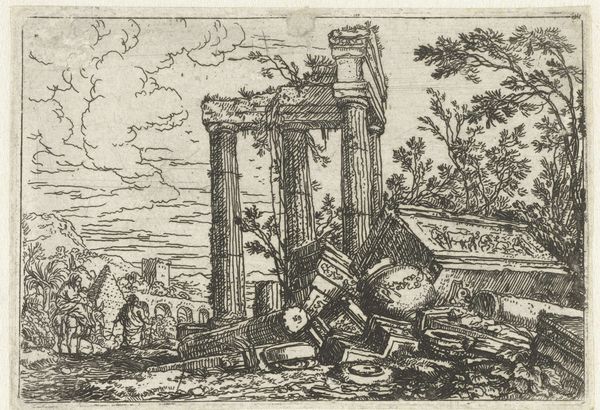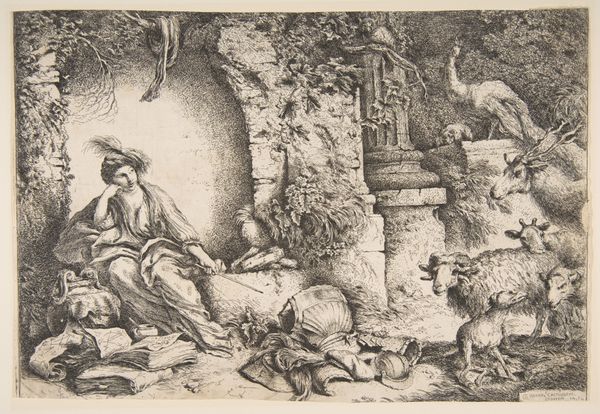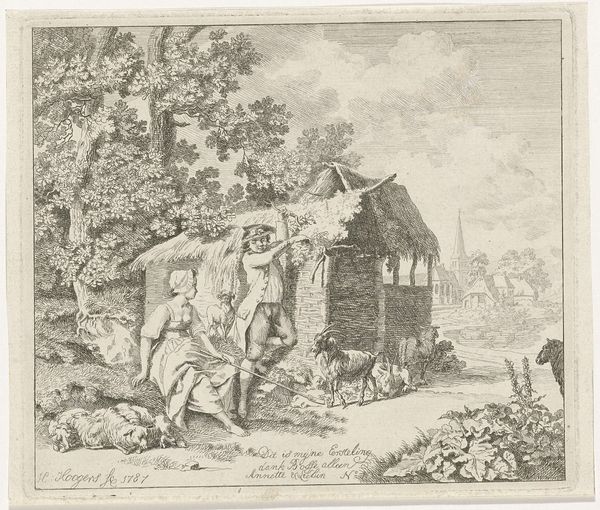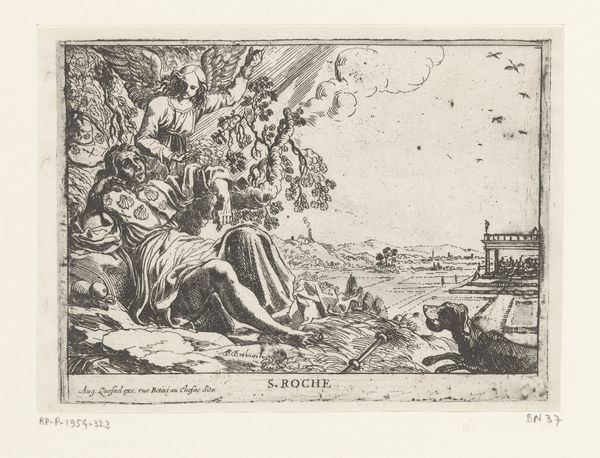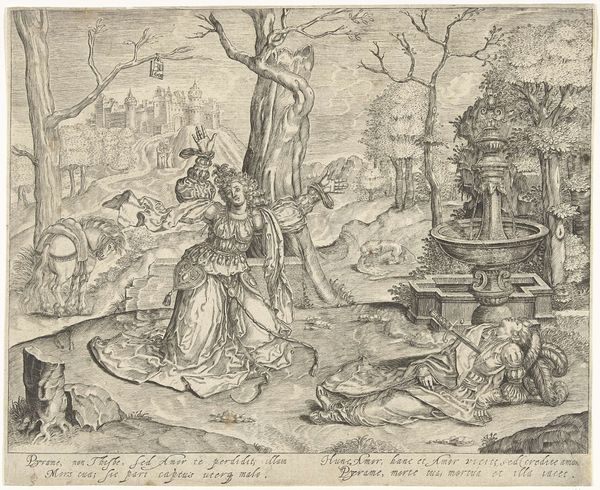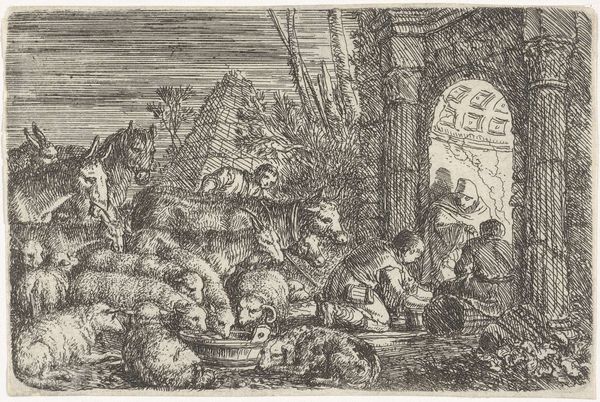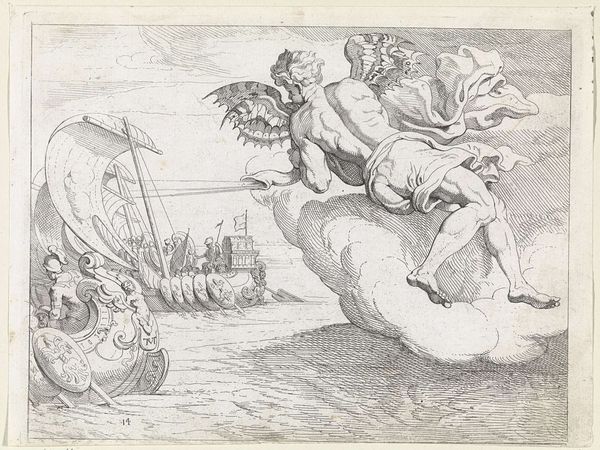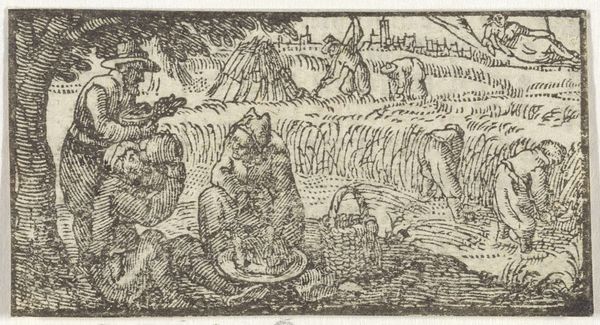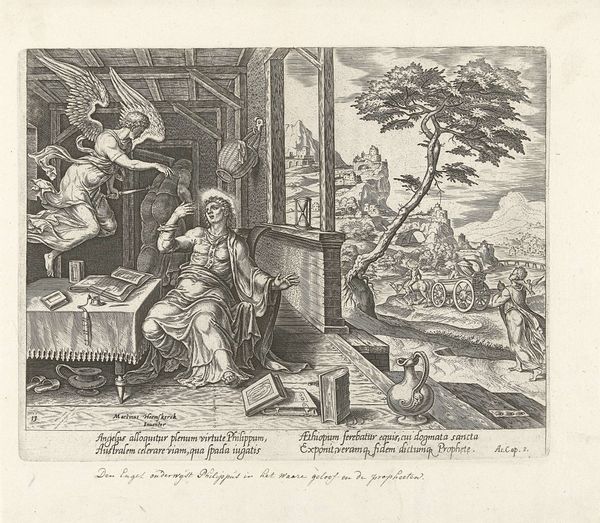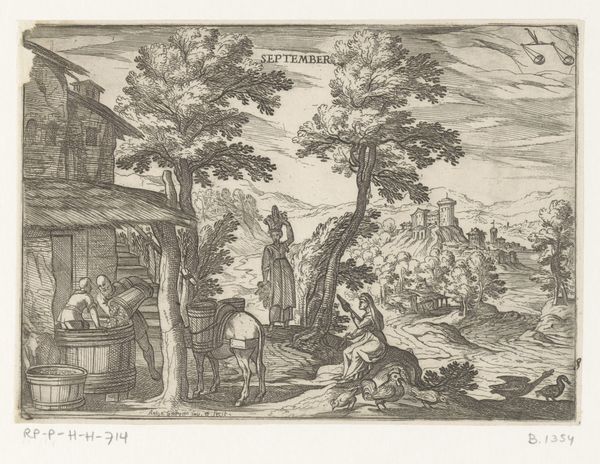
print, engraving
#
baroque
#
pen drawing
#
mechanical pen drawing
# print
#
pen illustration
#
pen sketch
#
old engraving style
#
landscape
#
figuration
#
personal sketchbook
#
pen-ink sketch
#
line
#
pen work
#
sketchbook drawing
#
history-painting
#
sketchbook art
#
engraving
Dimensions: height 78 mm, width 104 mm
Copyright: Rijks Museum: Open Domain
Curator: Here we have Jonas Umbach's "Democritus Mediterend," an engraving from between 1634 and 1693 currently residing in the Rijksmuseum. Editor: It strikes me as melancholic. A man amidst ruins, contemplating… the futility of it all, perhaps? The stark lines amplify that sense of desolation. Curator: The piece exemplifies the baroque fascination with ruins and the passage of time, and I’d wager that the material process mirrors this theme. Umbach's deliberate choice of engraving, a painstaking and subtractive method, embodies the slow erosion suggested by the imagery itself. Editor: Exactly! The ruins themselves become a focal point. Note how the figure of Democritus is contextualized by fragmented architecture, crumbling monuments. The engraving then reflects broader social concerns regarding power, loss, and historical narrative. Curator: Considering that engravings at this time were typically produced within a workshop context, perhaps commissioned, it points to a clear demand for imagery grappling with the impermanence of human achievement. Who was buying these, and what was their intended purpose? Did these serve as memento mori? Editor: Absolutely, that makes me consider class, religion, the culture of the Dutch Golden Age—what fears, or moral messages, might this serve to propagate? Democritus, the laughing philosopher, reduced here to pensive study… This resonates with broader social concerns about mortality and hubris. It prompts me to consider the function of art in shaping and reflecting societal values during the period. Curator: It’s fascinating to think of Umbach translating something so temporal into a medium known for its capacity for mass production. He turned ephemeral feelings into something tangible and reproducible using sharp metal tools and a labor intensive printmaking process. Editor: Which underscores, in a beautifully unsettling way, the core paradox within the work—and even life itself. A still and reproducible object which prompts our reflections on mortality, time, history, and change. Thank you for that insightful interpretation. Curator: Likewise! Considering the materials and the processes really clarified Umbach's statement, and indeed his perspective as the maker.
Comments
No comments
Be the first to comment and join the conversation on the ultimate creative platform.
